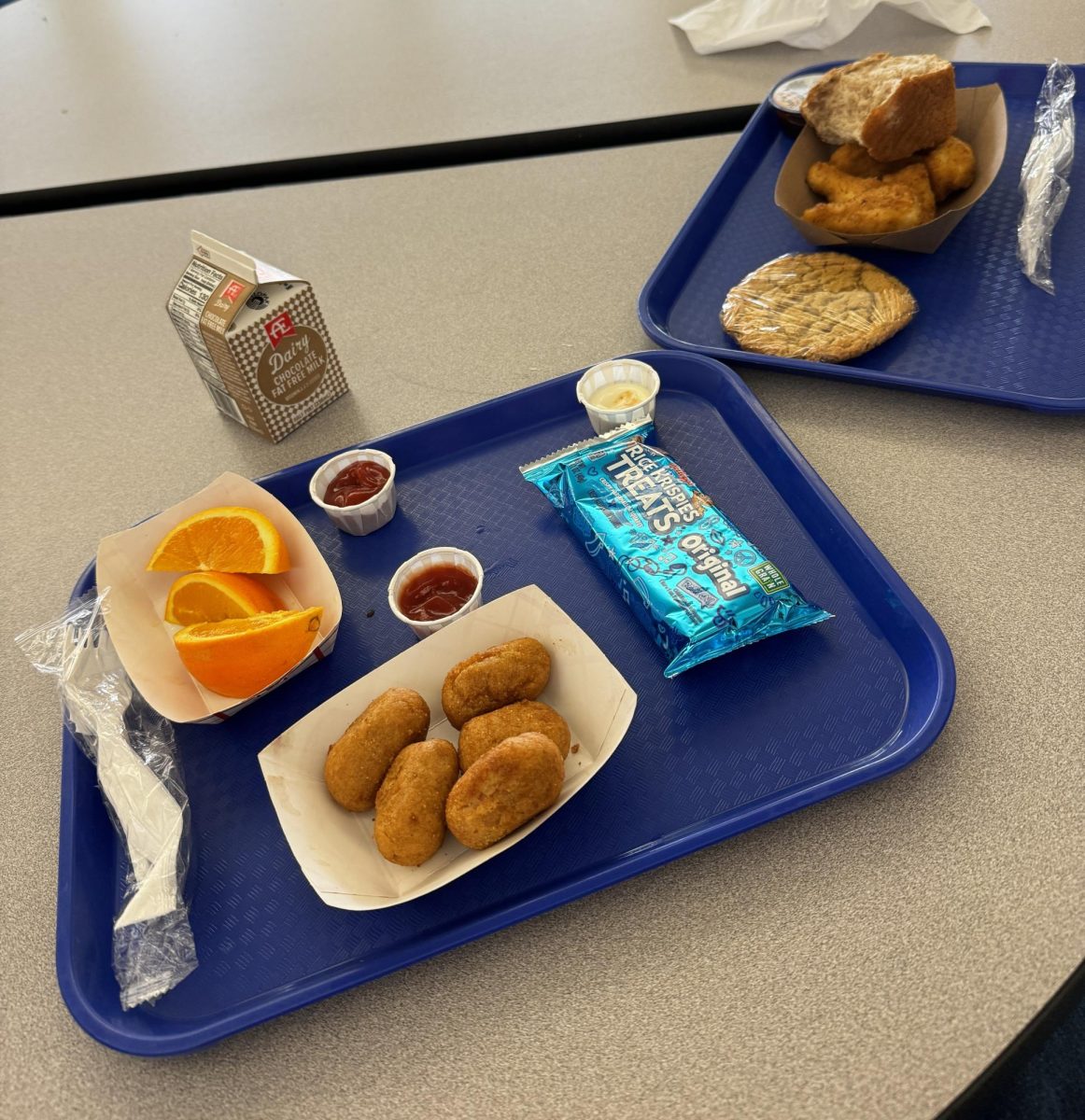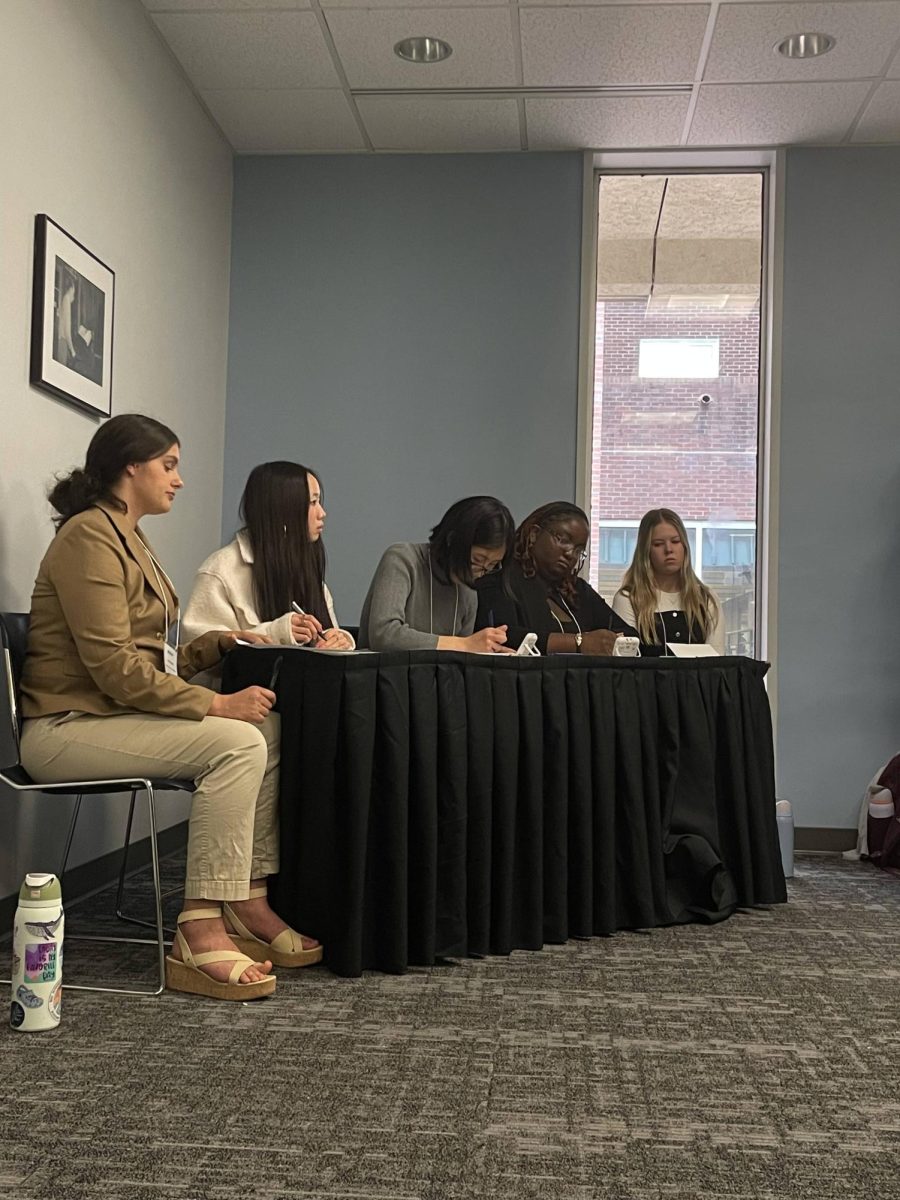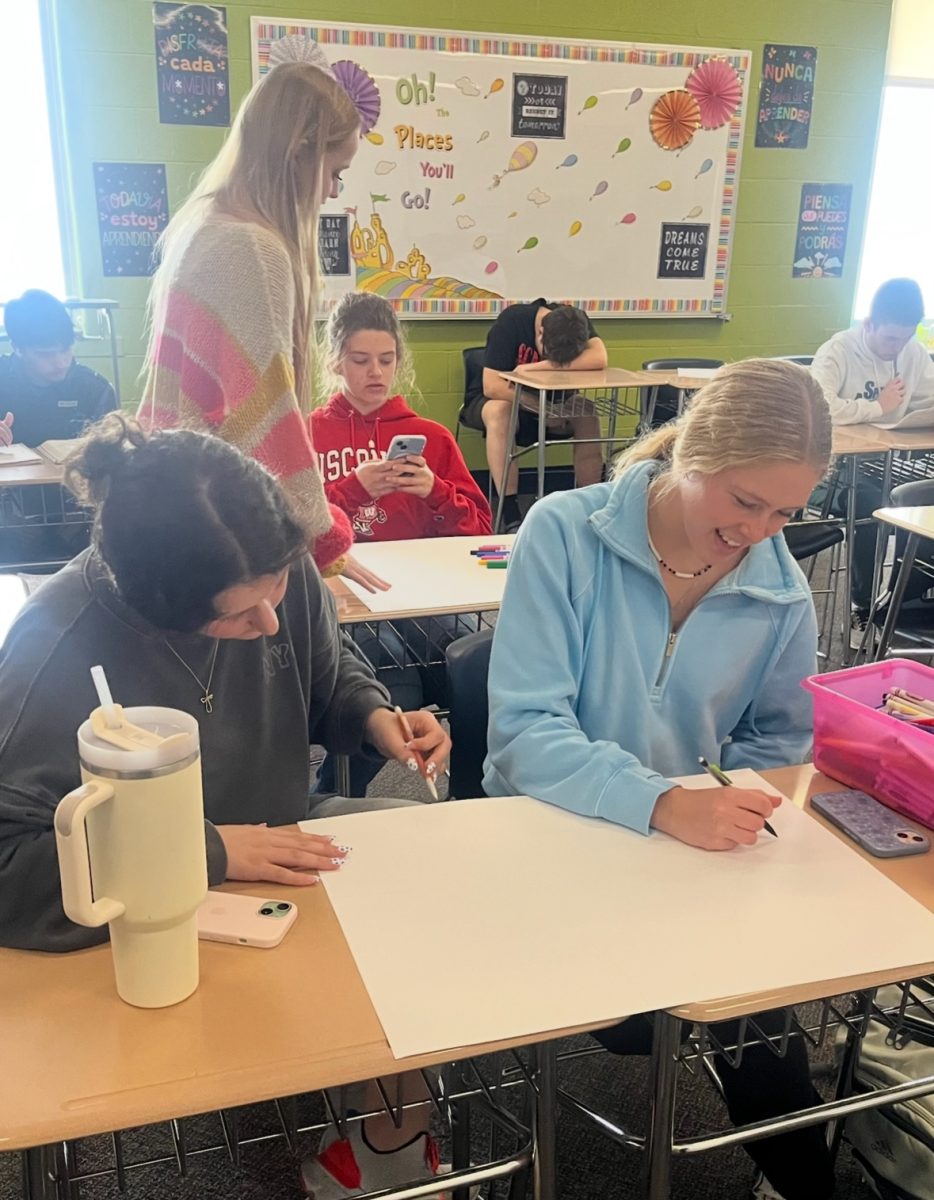Portion sizes across the Pleasant Valley school district reveal a discrepancy in student diets. In elementary and high school cafeterias at PV, certain meals test the idea of an acceptably-sized lunch.
There is an obvious difference between the needs of a first grader’s body and a high school senior’s body. A high school student needs between 750 and 850 calories in their lunch to help them get through the day. Kindergarten through fifth grade students should have 550 to 650 calories in their lunches. Despite the difference between food needs, the same meals are served across the district.
Pizza Crunchers are one popular menu item at all schools in the district. These marinara stuffed mozzarella sticks contain 100 calories each. Despite the lack of nutrients in this lunch entré, it continues to be a featured meal multiple times a month in every school.
The elementary school serving size is the same as the high school serving size. Pizza Crunchers are served in four piece portions at every school in the district, amounting to 400 calories. Vegetables are the most common side served in the lunchroom. The suggested serving size for a side of vegetables is one cup, which equates to roughly 120 calories.
With a couple sides, elementary students can fulfill their caloric intake needs, but the same is not true for highschool students. High school students need a substantial amount of extra sides and snacks to meet their much larger calorie needs.
Most dishes served in the Pleasant Valley cafeterias offer the same portion size no matter the age of the student. From Boneless Chicken Drummies to Pasta and breadsticks, all meals are served in the same size.
Mandarin Orange Chicken is another popular lunch for high school students, but they get the same 2.8 ounces of food as the students ten years younger. At 150 calories per serving, it is hard to meet the suggested intake, even at a younger age.
Senior Alex Kruse shared his frustrations with the lunch sizes. “On days where we have things like pizza especially, I feel like I have to get multiple slices just so I am not hungry. If I just got the one slice there is no way I wouldn’t need a granola bar or something before I got home,” he said.
The lunch prices are not quite disproportionate to the servings. Typical elementary school lunches total $2.60 and high school lunches total $3.00. With all of the extra options offered at the high school, it is logical for the price to be higher.
Junior Olivia Beam takes no concern over the consistent portion sizes. “I just think that children know when they get full and have the choice to stop eating if the food given to them is too much. Also, people at the high school do have the option to buy more food if it isn’t enough. It seems silly to offer more food than some students need just to cover the small percentage that need extra,” she commented.
Beam’s thoughts raise a question of if the portion sizes at PV is a problem that needs to be solved.
School lunches could continue to be served in the manner that they are now, or there could be some alterations to the system. Lunches could be priced by weight, number of items, or portion sizes could be changed to fit age needs.
“People can also just bring their own lunches if what the school serves doesn’t work for them,” Beam noted.
Whatever the solution may be, it should still be noted that some nutritional needs of students are not being met by the school lunch system. A critical factor in the future of school lunches at PV might be the ability to adapt to changing age and body demographics. Advocating for equality and fairness in education needn’t stop in the classroom; the necessity of nourishment for both the body and brain is fundamental, and that begins in the cafeteria.










Nick Puthoff • Apr 14, 2024 at 10:54 pm
I have to agree with this, the amount of food that we get in out lunch servings are not enough. Most times we have to purchase the extra sides just so we aren’t hungry.
Alex • Apr 14, 2024 at 10:06 pm
The entire school lunch system should be reconsidered